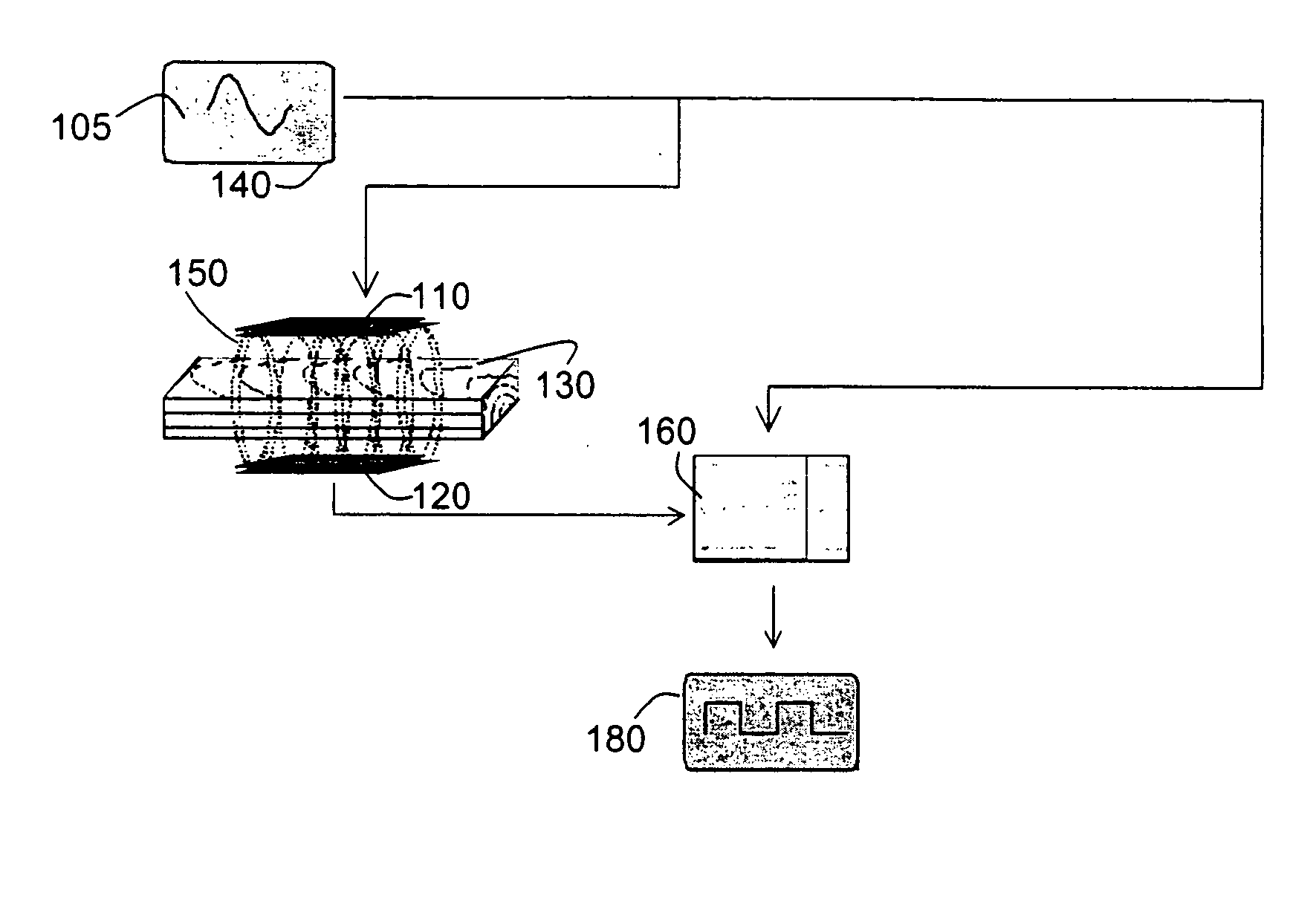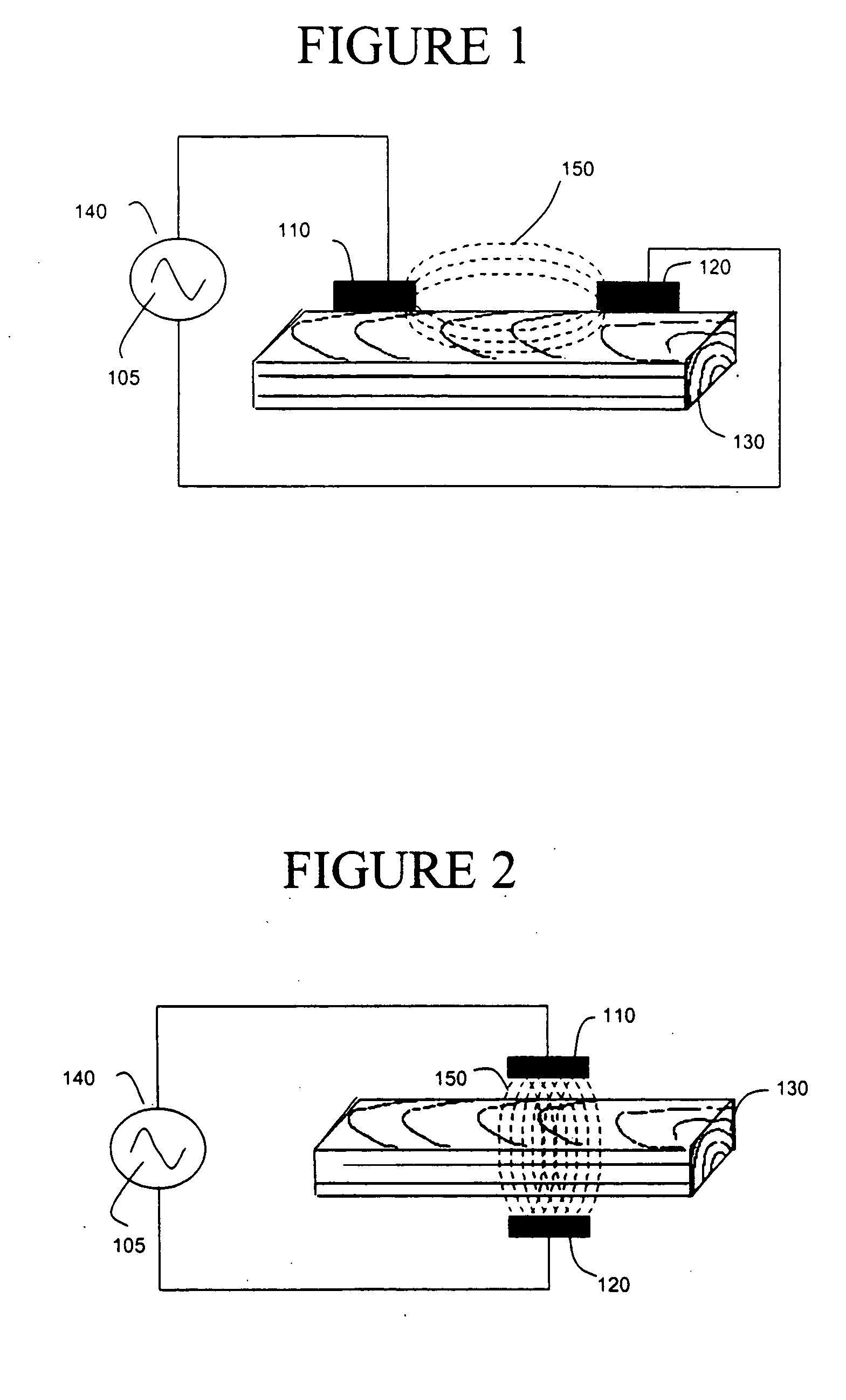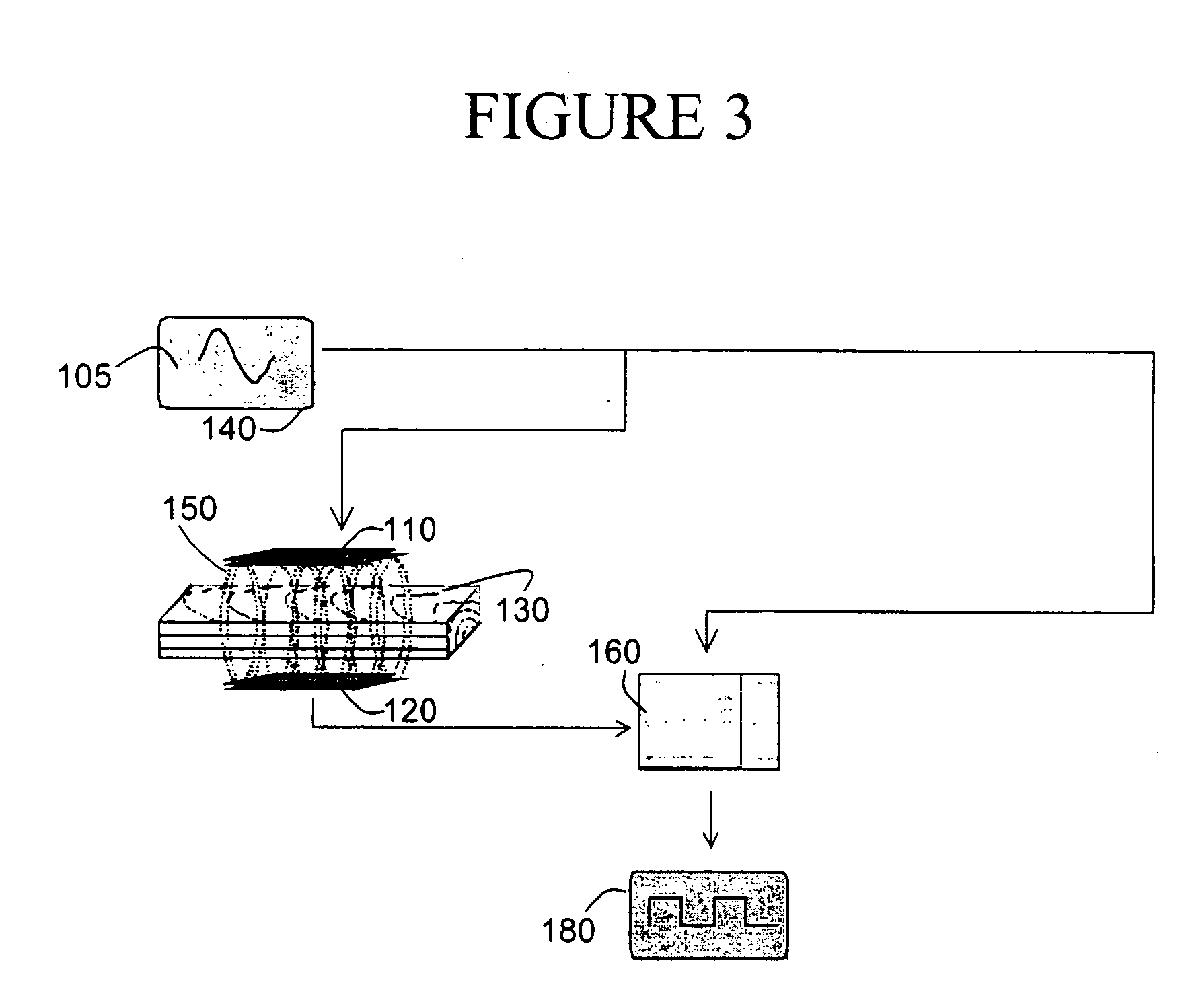Moisture and density detector (MDD)
a detector and density technology, applied in the field of moisture and density detectors, can solve the problems of limited technology applied by rosenau and others, measurement errors, and inaccurate estimates of inserted pin resistance devices, and achieve the effect of positive identification of juvenile wood and phase shift reduction
- Summary
- Abstract
- Description
- Claims
- Application Information
AI Technical Summary
Benefits of technology
Problems solved by technology
Method used
Image
Examples
Embodiment Construction
[0097] The present invention is directed to an apparatus and method for estimating moisture content and / or density of dielectric materials. The present invention can sense the dielectric response of a radio frequency signal or any other signal passed through the dielectric material. A radio frequency signal or other signal can be passed between opposed or adjacent capacitance electrodes and can measure the signal strength and phase shift of the signal. The addition of phase shift and multiple frequencies can improve the accuracy of the results of this type of device for multiple layer scanning.
[0098] Although the MDD can be used for any dielectric material, it is very useful in detecting the moisture content and / or density of wood and wood-based materials. In particular, the MDD can be used to detect the moisture content and / or density of lumber in a dry kiln prior to, during and / or following drying.
[0099]FIG. 1 displays an exemplary embodiment of an adjacent electrode radio-frequ...
PUM
| Property | Measurement | Unit |
|---|---|---|
| frequency | aaaaa | aaaaa |
| dielectric constants | aaaaa | aaaaa |
| frequencies | aaaaa | aaaaa |
Abstract
Description
Claims
Application Information
 Login to View More
Login to View More - R&D
- Intellectual Property
- Life Sciences
- Materials
- Tech Scout
- Unparalleled Data Quality
- Higher Quality Content
- 60% Fewer Hallucinations
Browse by: Latest US Patents, China's latest patents, Technical Efficacy Thesaurus, Application Domain, Technology Topic, Popular Technical Reports.
© 2025 PatSnap. All rights reserved.Legal|Privacy policy|Modern Slavery Act Transparency Statement|Sitemap|About US| Contact US: help@patsnap.com



